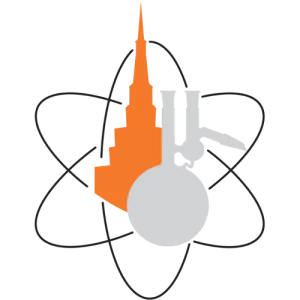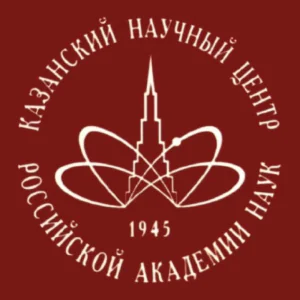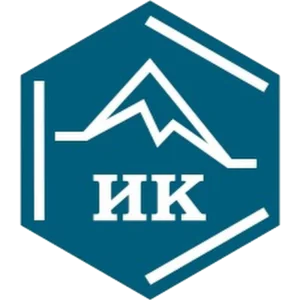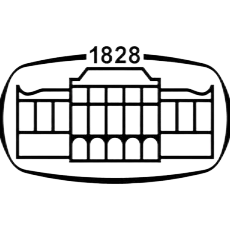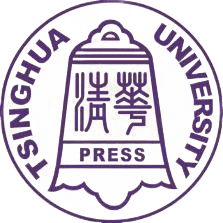Open Access


Undirected, Homogeneous C–H Bond Functionalization: Challenges and Opportunities
Publication type: Journal Article
Publication date: 2016-05-02
scimago Q1
wos Q1
SJR: 3.286
CiteScore: 19.3
Impact factor: 10.4
ISSN: 23747943, 23747951
PubMed ID:
27294201
General Chemistry
General Chemical Engineering
Abstract
The functionalization of C–H bonds has created new approaches to preparing organic molecules by enabling new strategic “disconnections” during the planning of a synthetic route. Such functionalizations also have created the ability to derivatize complex molecules by modifying one or more of the many C–H bonds. For these reasons, researchers are developing new types of functionalization reactions of C–H bonds and new applications of these processes. These C–H bond functionalization reactions can be divided into two general classes: those directed by coordination to an existing functional group prior to the cleavage of the C–H bond (directed) and those occurring without coordination prior to cleavage of the C–H bond (undirected). The undirected functionalizations of C–H bonds are much less common and more challenging to develop than the directed reactions. This outlook will focus on undirected C–H bond functionalization, as well as related reactions that occur by a noncovalent association of the catalyst prior to C–H bond cleavage. The inherent challenges of conducting undirected functionalizations of C–H bonds and the methods for undirected functionalization that are being developed will be presented, along with the factors that govern selectivity in these reactions. Finally, this outlook discusses future directions for research on undirected C–H functionalization, with an emphasis on the limitations that must be overcome if this type of methodology is to become widely used in academia and in industry.
Found
Nothing found, try to update filter.
Found
Nothing found, try to update filter.
Top-30
Journals
|
10
20
30
40
50
60
70
80
|
|
|
Angewandte Chemie - International Edition
73 publications, 9.59%
|
|
|
Angewandte Chemie
73 publications, 9.59%
|
|
|
Journal of the American Chemical Society
59 publications, 7.75%
|
|
|
ACS Catalysis
49 publications, 6.44%
|
|
|
Organic Letters
31 publications, 4.07%
|
|
|
Chemistry - A European Journal
31 publications, 4.07%
|
|
|
Journal of Organic Chemistry
27 publications, 3.55%
|
|
|
Organometallics
25 publications, 3.29%
|
|
|
Chemical Science
25 publications, 3.29%
|
|
|
Chemical Communications
22 publications, 2.89%
|
|
|
Organic Chemistry Frontiers
15 publications, 1.97%
|
|
|
Organic and Biomolecular Chemistry
14 publications, 1.84%
|
|
|
Chemical Reviews
11 publications, 1.45%
|
|
|
European Journal of Organic Chemistry
11 publications, 1.45%
|
|
|
Synthesis
11 publications, 1.45%
|
|
|
Nature Communications
10 publications, 1.31%
|
|
|
ACS Central Science
9 publications, 1.18%
|
|
|
Advanced Synthesis and Catalysis
9 publications, 1.18%
|
|
|
Asian Journal of Organic Chemistry
9 publications, 1.18%
|
|
|
Synlett
8 publications, 1.05%
|
|
|
Nature
7 publications, 0.92%
|
|
|
Chem
7 publications, 0.92%
|
|
|
Dalton Transactions
6 publications, 0.79%
|
|
|
Green Chemistry
6 publications, 0.79%
|
|
|
Science
6 publications, 0.79%
|
|
|
Nature Catalysis
5 publications, 0.66%
|
|
|
Nature Chemistry
5 publications, 0.66%
|
|
|
ACS Omega
5 publications, 0.66%
|
|
|
Journal of Catalysis
4 publications, 0.53%
|
|
|
10
20
30
40
50
60
70
80
|
Publishers
|
50
100
150
200
250
300
|
|
|
Wiley
265 publications, 34.82%
|
|
|
American Chemical Society (ACS)
229 publications, 30.09%
|
|
|
Royal Society of Chemistry (RSC)
105 publications, 13.8%
|
|
|
Elsevier
54 publications, 7.1%
|
|
|
Springer Nature
51 publications, 6.7%
|
|
|
Georg Thieme Verlag KG
20 publications, 2.63%
|
|
|
MDPI
7 publications, 0.92%
|
|
|
American Association for the Advancement of Science (AAAS)
7 publications, 0.92%
|
|
|
Oxford University Press
6 publications, 0.79%
|
|
|
Beilstein-Institut
3 publications, 0.39%
|
|
|
Pharmaceutical Society of Japan
2 publications, 0.26%
|
|
|
Shanghai Institute of Organic Chemistry
2 publications, 0.26%
|
|
|
Taylor & Francis
2 publications, 0.26%
|
|
|
Autonomous Non-profit Organization Editorial Board of the journal Uspekhi Khimii
2 publications, 0.26%
|
|
|
Akademiai Kiado
1 publication, 0.13%
|
|
|
The Society of Synthetic Organic Chemistry, Japan
1 publication, 0.13%
|
|
|
Cambridge University Press
1 publication, 0.13%
|
|
|
OOO Zhurnal "Mendeleevskie Soobshcheniya"
1 publication, 0.13%
|
|
|
Cold Spring Harbor Laboratory
1 publication, 0.13%
|
|
|
Tsinghua University Press
1 publication, 0.13%
|
|
|
50
100
150
200
250
300
|
- We do not take into account publications without a DOI.
- Statistics recalculated weekly.
Are you a researcher?
Create a profile to get free access to personal recommendations for colleagues and new articles.
Metrics
761
Total citations:
761
Citations from 2024:
167
(21.94%)
Cite this
GOST |
RIS |
BibTex |
MLA
Cite this
GOST
Copy
Hartwig J. H. et al. Undirected, Homogeneous C–H Bond Functionalization: Challenges and Opportunities // ACS Central Science. 2016. Vol. 2. No. 5. pp. 281-292.
GOST all authors (up to 50)
Copy
Hartwig J. H., Larsen M. A. Undirected, Homogeneous C–H Bond Functionalization: Challenges and Opportunities // ACS Central Science. 2016. Vol. 2. No. 5. pp. 281-292.
Cite this
RIS
Copy
TY - JOUR
DO - 10.1021/acscentsci.6b00032
UR - https://doi.org/10.1021/acscentsci.6b00032
TI - Undirected, Homogeneous C–H Bond Functionalization: Challenges and Opportunities
T2 - ACS Central Science
AU - Hartwig, John H
AU - Larsen, Matthew A
PY - 2016
DA - 2016/05/02
PB - American Chemical Society (ACS)
SP - 281-292
IS - 5
VL - 2
PMID - 27294201
SN - 2374-7943
SN - 2374-7951
ER -
Cite this
BibTex (up to 50 authors)
Copy
@article{2016_Hartwig,
author = {John H Hartwig and Matthew A Larsen},
title = {Undirected, Homogeneous C–H Bond Functionalization: Challenges and Opportunities},
journal = {ACS Central Science},
year = {2016},
volume = {2},
publisher = {American Chemical Society (ACS)},
month = {may},
url = {https://doi.org/10.1021/acscentsci.6b00032},
number = {5},
pages = {281--292},
doi = {10.1021/acscentsci.6b00032}
}
Cite this
MLA
Copy
Hartwig, John H., et al. “Undirected, Homogeneous C–H Bond Functionalization: Challenges and Opportunities.” ACS Central Science, vol. 2, no. 5, May. 2016, pp. 281-292. https://doi.org/10.1021/acscentsci.6b00032.





